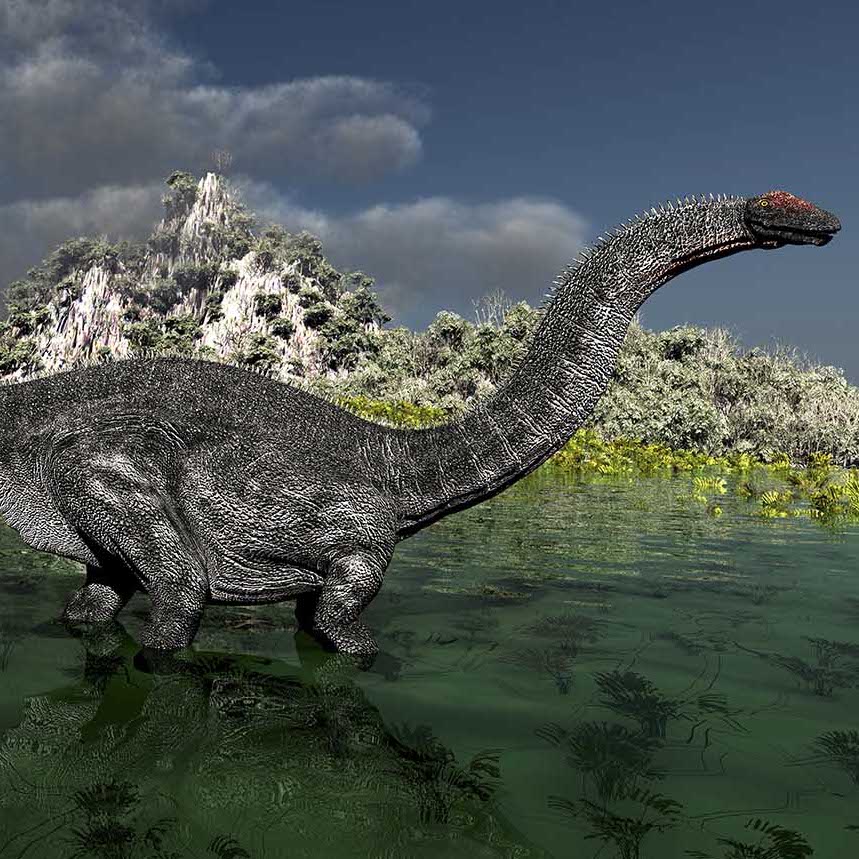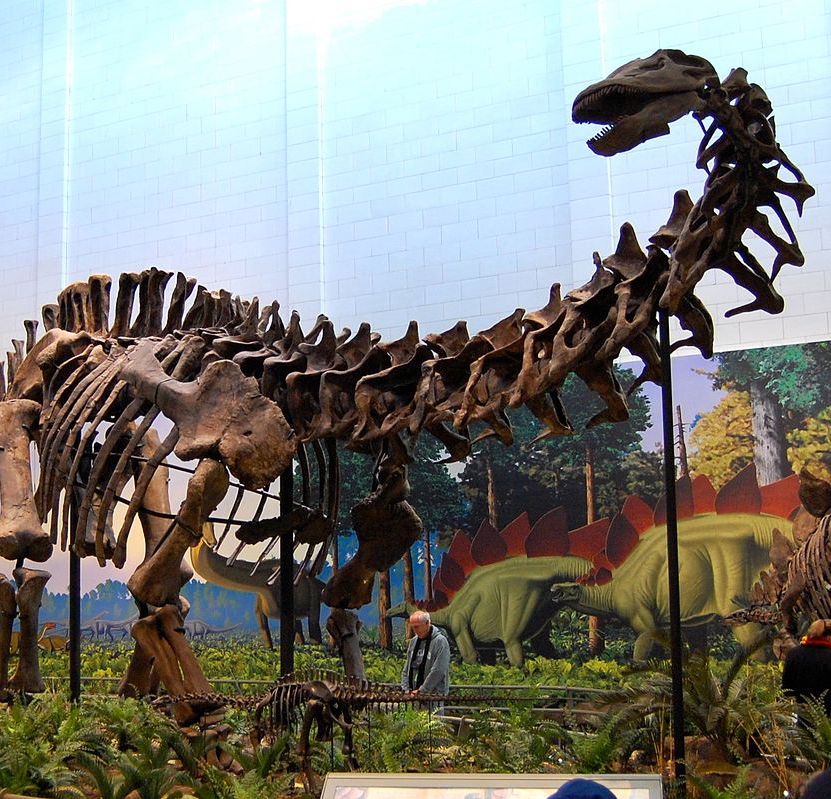The size, shape, and features of the Apatosaurus head were disputed for more than a century after its remains were first uncovered. Certainty was clouded in part by incomplete fossil finds and by a suspected mix-up of the first fossils during shipment from an excavation site. The head was originally and mistakenly represented in models like that of a camarasaurid, with a square, snubnosed skull and spoonlike teeth. In 1978, however, scientists rediscovered a long-lost skull in the basement of the Carnegie Museum in Pittsburgh, Pennsylvania. This was the skull that actually belonged to an Apatosaurus skeleton; it was slender and elongated and contained long peglike teeth, like those of a diplodocid. Henceforth, Apatosaurus skull models in museums around the world were changed accordingly.
The Apatosaurus skull was slender and elongated and contained long peglike teeth.
This dinosaur weighed as much as 45 tons, and measured up to 75 feet long.
The Apatosaurus may have had a range of around 16–25 miles per day, and they could potentially have reached a top speed of 12–19 miles per hour.

The size, shape, and features of the Apatosaurus head were disputed for more than a century after its remains were first uncovered. Certainty was clouded in part by incomplete fossil finds and by a suspected mix-up of the first fossils during shipment from an excavation site. The head was originally and mistakenly represented in models like that of a camarasaurid, with a square, snubnosed skull and spoonlike teeth. In 1978, however, scientists rediscovered a long-lost skull in the basement of the Carnegie Museum in Pittsburgh, Pennsylvania. This was the skull that actually belonged to an Apatosaurus skeleton; it was slender and elongated and contained long peglike teeth, like those of a diplodocid. Henceforth, Apatosaurus skull models in museums around the world were changed accordingly.
Much discussion has centred on whether Apatosaurus and related forms were able to support their great bulk on the land or were forced to adopt aquatic habits. Many lines of evidence, including skeletal structure and footprints, show that Apatosaurus and all sauropods were terrestrial, like elephants. No skeletal features are indicative of an aquatic existence, and analyses suggest that the dinosaur’s bones could easily have supported its great weight. Footprints show that the toes were covered in horny pads like those of elephants. Furthermore, the ribcage was heart-shaped in cross-section like those of elephants, not barrel-shaped like that of the amphibious hippopotamus. Even the massive Brachiosaurus, which weighed about 80 tonnes (roughly 88 tons), was probably more often on land than in the water.
The most complete fossilised skeleton of an Apatosaurus ever found is going on display in Mexico. The dinosaur nick-named “Einstein” as it was found with most of its skull material intact, rare indeed for a Sauropod, is on display at the Lewis Hall in Fundidora Park, Monterrey, northern Mexico.

Want to learn more about the dinosaur species? Click on the buttons below to read all about these prehistoric creatures.
Features of the Apatosaurus head were disputed for a century after its remains were first uncovered.
Know MoreThis dinosaur is one of the longest and most recognizable dinosaurs on the planet.
Know MorePterodactyl had wings formed by a skin stretching from its fourth finger to its hind limbs.
Know MoreIt is believed that Triceratops ate mostly low growth vegetation such as ferns and shrubbery.
Know More